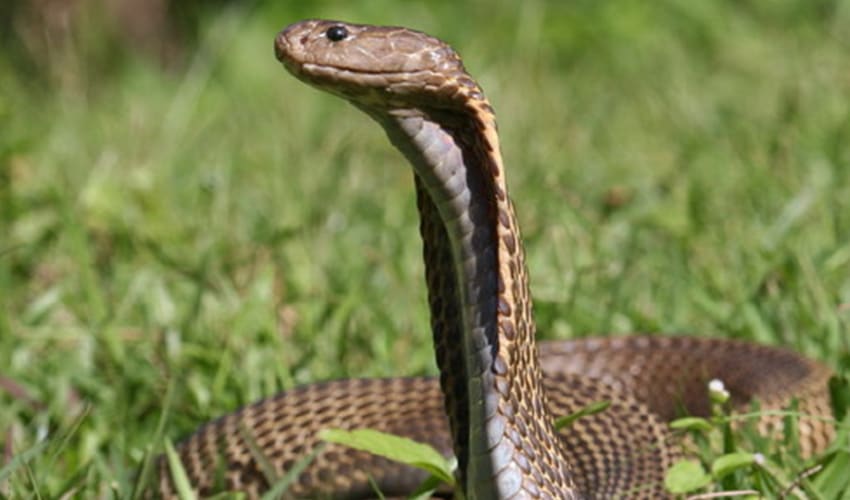One of the most fascinating and feared snakes in the world—especially because of its reputation as one of the few cobras that can accurately spit venom. Found mainly on the northern islands of the Philippines, particularly Luzon, this cobra isn’t just dangerous—it’s also remarkably intelligent and well-adapted to its environment.
Unlike some cobras with dramatic hoods and bold markings, the Philippine cobra is relatively modest in appearance. It usually sports a solid brown or dark bronze color, which helps it blend into the forest floor, grassy fields, and rice paddies where it lives. But don’t let its simple looks fool you. What really sets it apart is its ability to eject venom with precision. This cobra can spit venom up to 3 meters (nearly 10 feet), often aiming for the eyes of a perceived threat. The venom itself is highly potent and contains neurotoxins that can paralyze respiratory muscles—making it one of the most dangerous cobras in Asia.
Despite its scary reputation, the Philippine cobra is actually quite shy and will avoid confrontation if possible. It only becomes aggressive when cornered or threatened. Before spitting or striking, it often gives a warning display—flaring its hood, hissing loudly, and rearing up in a classic cobra pose. It’s like it’s saying, “Back off!” And if that doesn’t work, then the venom comes next.
Here’s an unexpected twist: not all cobras spit venom, but among the ones that do, the Philippine cobra is considered the most accurate spitter. Scientists believe it has special muscles in its venom glands that allow it to “shoot” the venom through small holes at the tips of its fangs with impressive force and aim. This gives it a major advantage for defense, especially since it can stop a threat without ever making physical contact.
Distribution
 Philippines
PhilippinesAnything we've missed?
Help us improve this page by suggesting edits. Glory never dies!
Suggest an editGet to know me
Terrestrial / Aquatic
Altricial / Precocial
Polygamous / Monogamous
Dimorphic (size) / Monomorphic
Active: Diurnal / Nocturnal
Social behavior: Solitary / Pack / Herd
Diet: Carnivore / Herbivore / Omnivore / Piscivorous / Insectivore
Migratory: Yes / No
Domesticated: Yes / No
Dangerous: Yes / No




